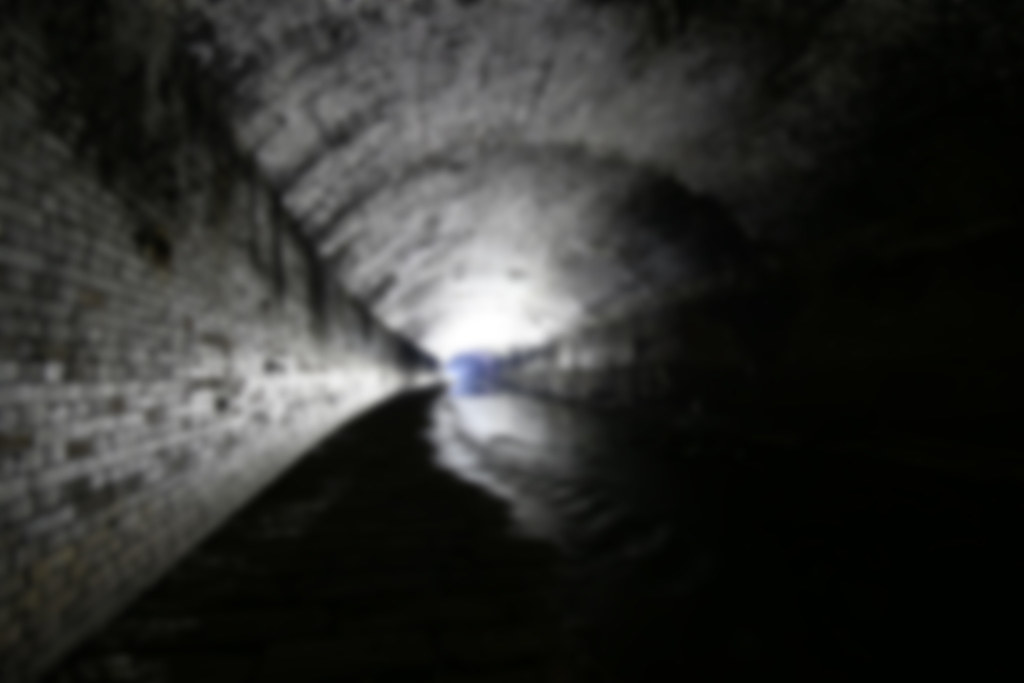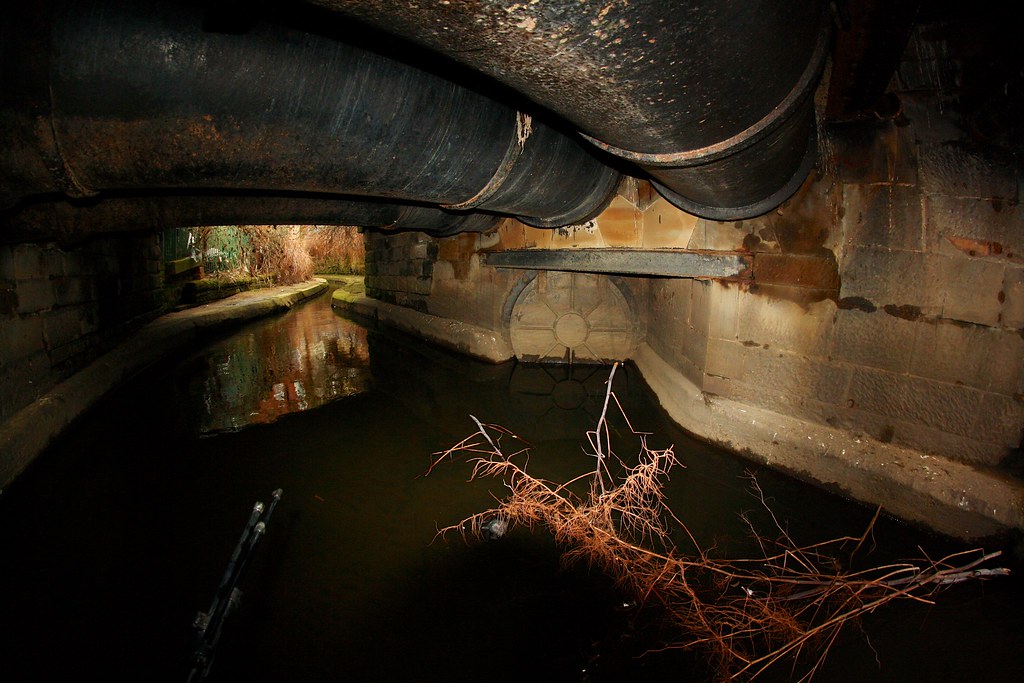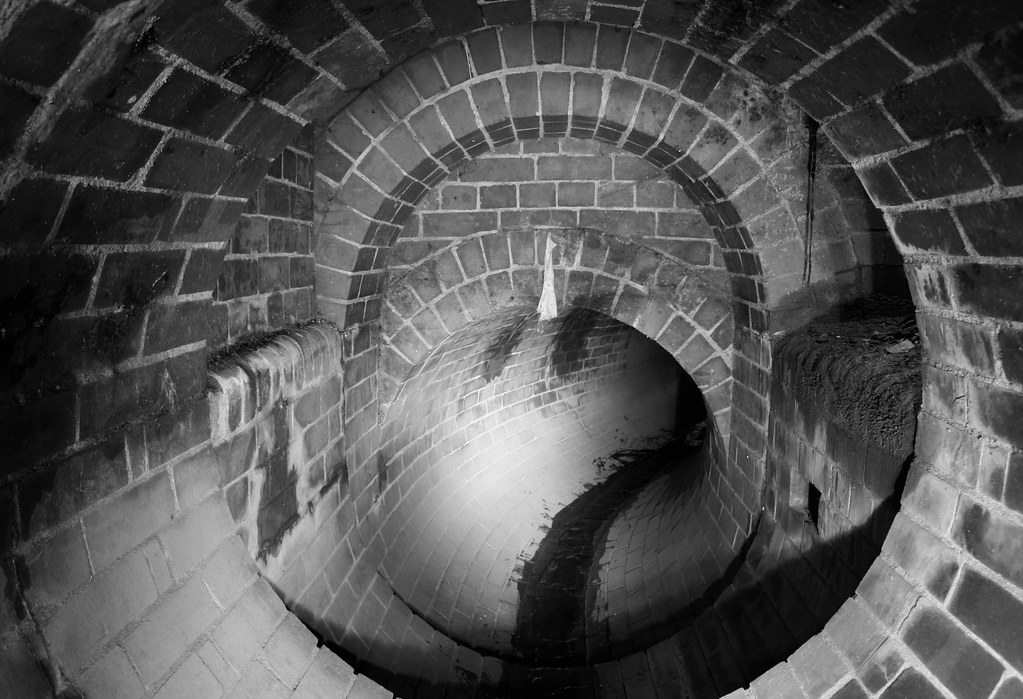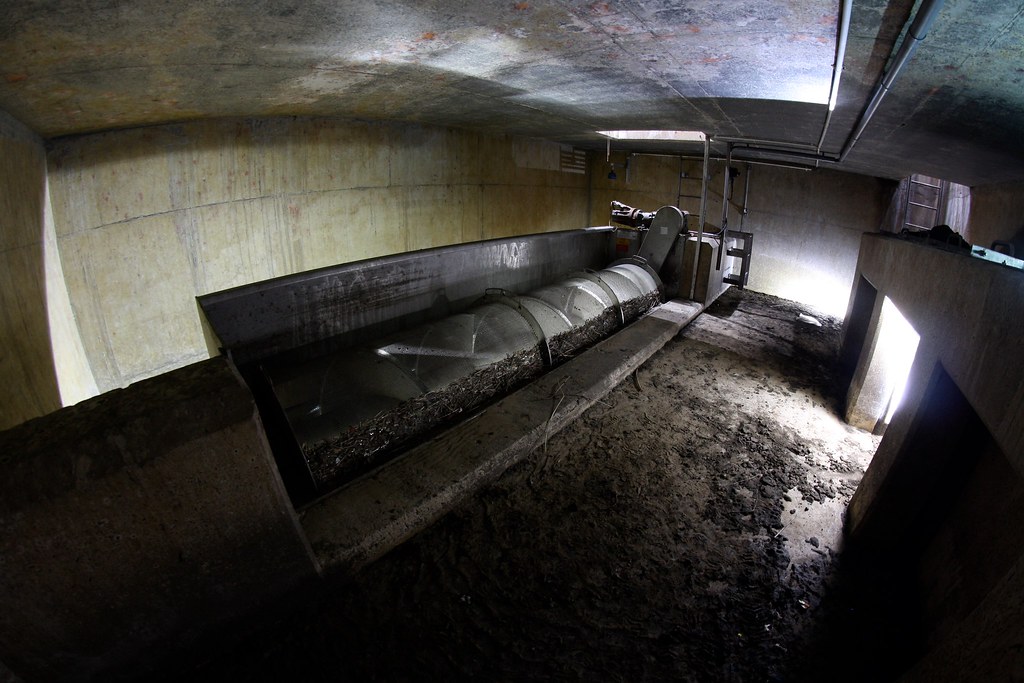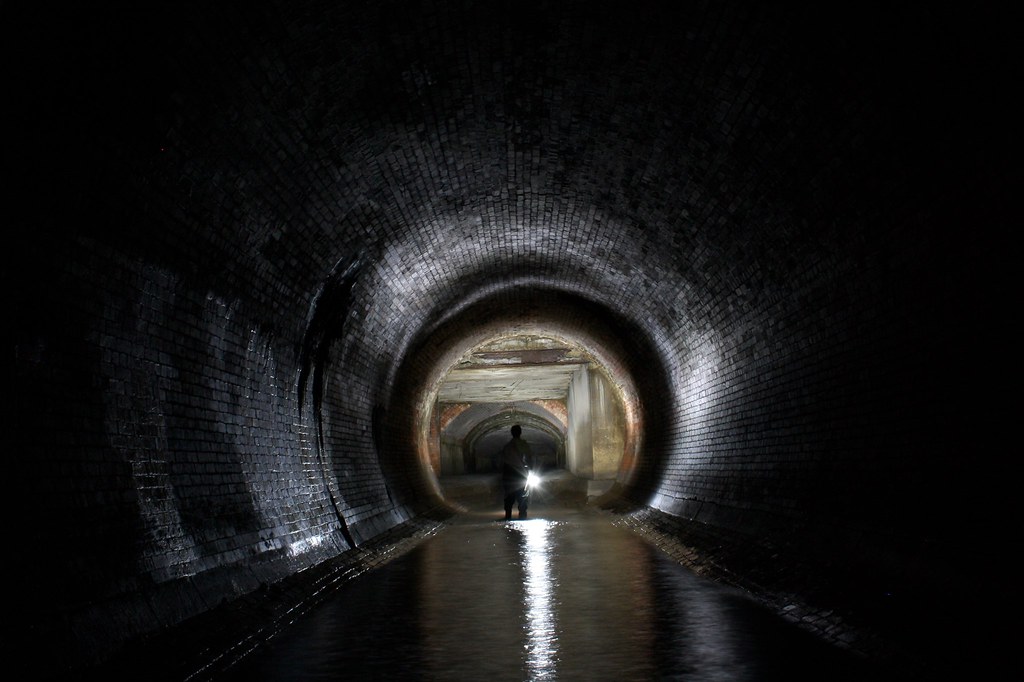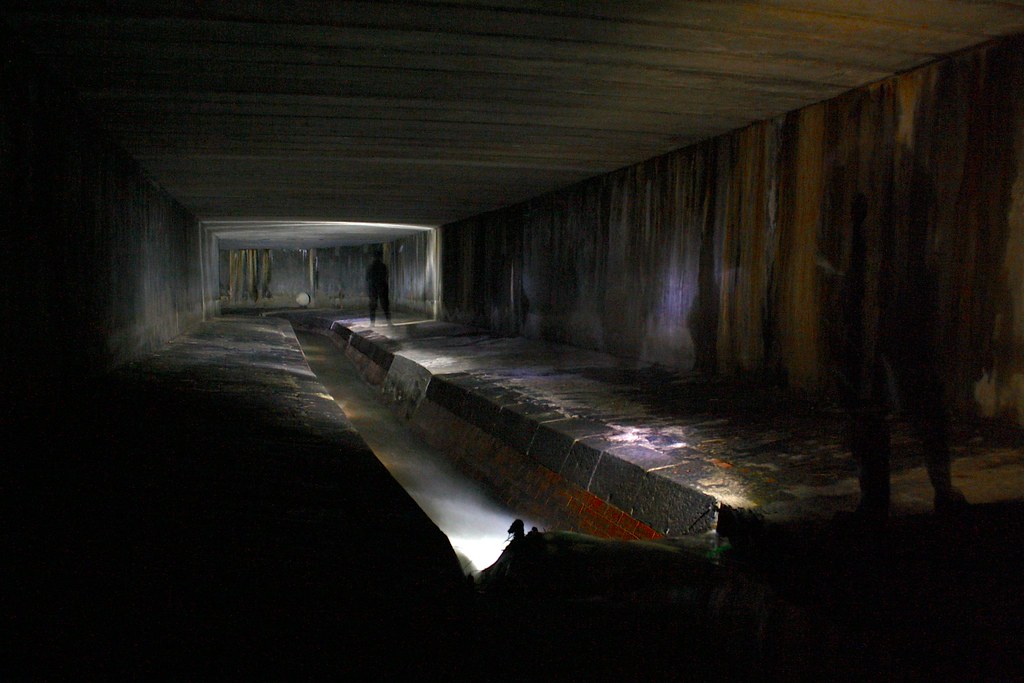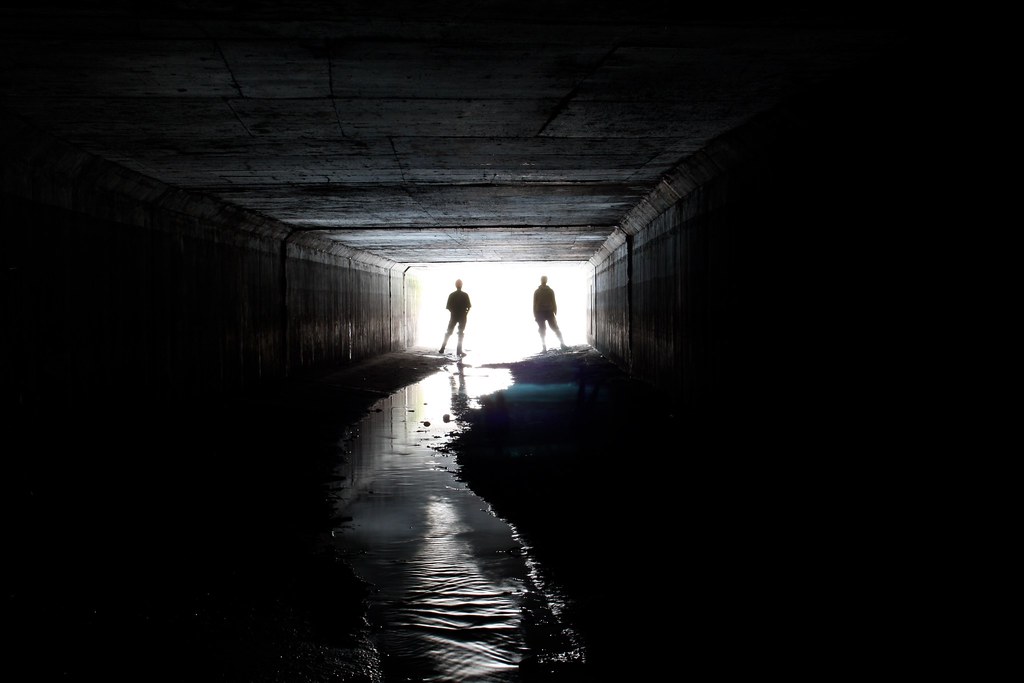I meet up with TheVicar and we headed to Leeds for the first drain of the weekend. Masticator ducks in and out of culverts, threading its way through the city. We got into the culvert and straight away side pipes beckoned further inspection, one home to a CSO chamber with the processing gear annoyingly up near the ceiling. The styles of construction varied from CMP, stone and brick arches and box sections.
Some sections were no more than bridges, one carrying several cast iron sewers over the brook with a flap presumably for the overflow underneath.
We found another flap that wasn't submerged and lifting the bottom a crack saw a nice looking stepped brick pipe. Whilst TheVicar hauled open the cast iron cover I slipped underneath trying not to dip myself in the fresh looking flow. Inside was a small chamber with stepirons to a manhole, and the pipe continuing on. I followed it until the first bend and decided the combination of dodgy petrol smelling air and heavy stooping wasn't the best and headed out.
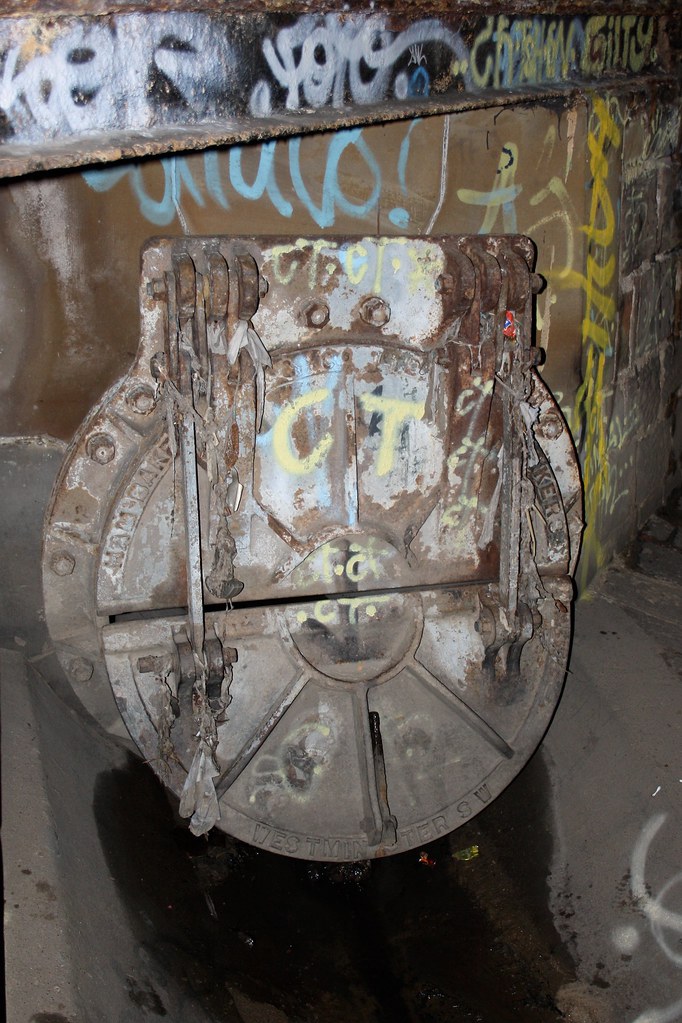
This junction lead to a dead culvert, with sinking sand like mud now filling it. The construction and style seemingly thrown together from whatever was to hand at the time.
The longest stretch underground is the downstream section, this changes from brick arch to box, both with a channel in the centre for normal flow levels.
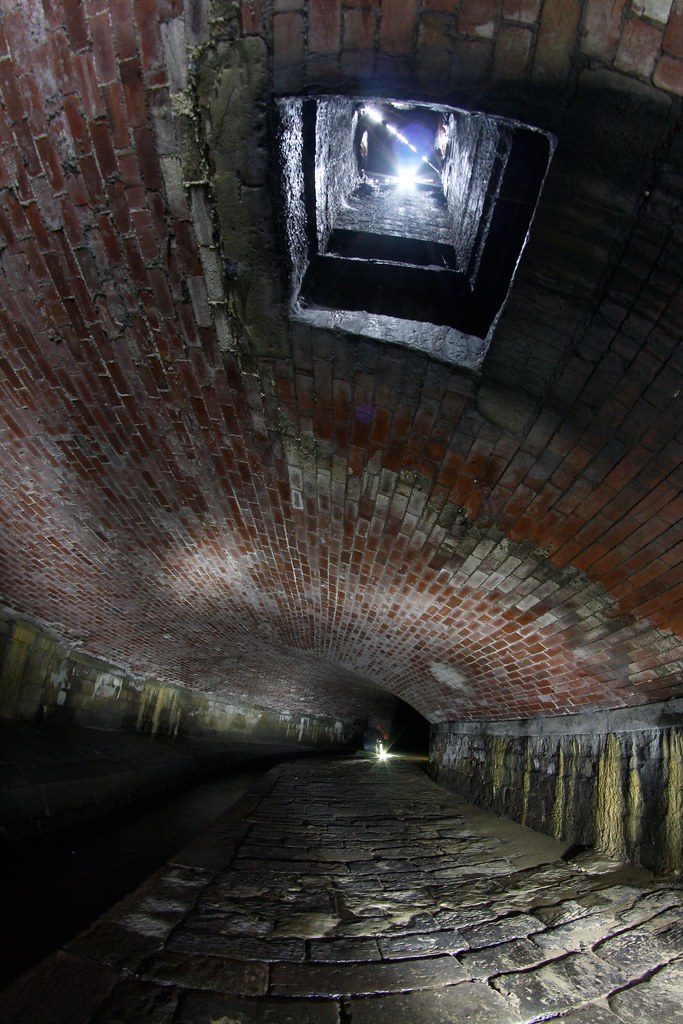
Three small plastic pipes lead off at one point, a short crawl later and you enter a CSO chamber. This was unique in my experience, an Archimedes' screw lay horizontally with its bottom half open to the sewer beneath. When levels in the sewer increased the screw would activate scooping the surface and removing solids.
The largest part of the culvert is a 12-14ft brick pipe, unfortunately not very long but certainly impressive.
Finally the culvert splits into two parallel concrete boxes and flows into the river.
